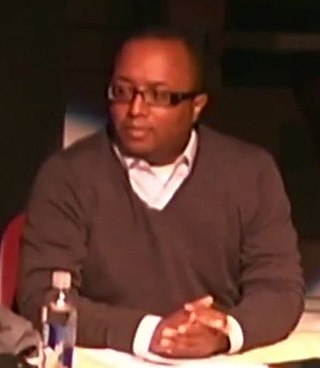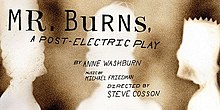
Cape Fear is a 1991 American psychological thriller film directed by Martin Scorsese. It is a remake of the 1962 film of the same title, which was based on the 1957 novel The Executioners by John D. MacDonald. The film stars Robert De Niro, Nick Nolte, Jessica Lange, Joe Don Baker, and Juliette Lewis. Robert Mitchum has a small role in the film, while Gregory Peck and Martin Balsam make cameo appearances, all three having starred in the original film.
"Cape Feare" is the second episode of the fifth season of the American animated television series The Simpsons. It originally aired on the Fox network in the United States on October 7, 1993. The episode features guest star Kelsey Grammer in his third major appearance as Sideshow Bob, who attempts to kill Bart Simpson again after getting out of jail, spoofing the 1962 film Cape Fear and its 1991 remake. Both films are based on John D. MacDonald's 1957 novel The Executioners and allude to other horror films such as Psycho.
"Homer Goes to College" is the third episode of the fifth season of the American animated television series The Simpsons. It originally aired on the Fox network in the United States on October 14, 1993. In the episode, Homer causes a nuclear meltdown during a plant inspection and is required to study nuclear physics at college. When Homer neglects his studies, the college dean has three nerds tutor him. Homer enlists the nerds' help in playing a prank on a rival college, leading to their expulsion. Homer invites them to live with the Simpsons, who soon grow tired of their new housemates.
Craig Wright is a playwright, television producer and writer. He is known for writing for shows including Six Feet Under and Lost and creating the television series Dirty Sexy Money and Greenleaf. He also was the screenwriter for the movie Mr. Peabody & Sherman, released March 7, 2014.
Constance Lalage "Lally" Katz is an American and Australian dramatist writing for theater, film, and television. She now resides in Los Angeles.
Nicky Silver is an American playwright. Formerly of Philadelphia, he resides in London. Many of his plays have been produced off-Broadway, and also at the Woolly Mammoth Theatre Company in Washington, D.C.

The fifth season of the American animated television series The Simpsons originally aired on the Fox network between September 30, 1993, and May 19, 1994. The showrunner for the fifth production season was David Mirkin who executive produced 20 episodes. Al Jean and Mike Reiss executive produced the remaining two, which were both hold overs that were produced for the previous season. The season contains some of the series' most acclaimed and popular episodes, including "Cape Feare", "Lisa vs. Malibu Stacy", "Homer Goes to College", "Deep Space Homer", and "Rosebud". It also includes the 100th episode, "Sweet Seymour Skinner's Baadasssss Song". The season was nominated for two Primetime Emmy Awards and won an Annie Award for Best Animated Television Program as well as an Environmental Media Award and a Genesis Award. The DVD box set was released in Region 1 on December 21, 2004, Region 2 on March 21, 2005, and Region 4 on March 23, 2005.
Tommy Murphy is an Australian playwright, screenwriter, adaptor and director. He created and was head writer for the 2022 TV series Significant Others. He is best known for his stage and screen adaptation of Timothy Conigrave's memoir Holding the Man. His most recent plays are a stage adaptation of Nevil Shute’s On The Beach, Mark Colvin's Kidney and Packer & Sons.

Woolly Mammoth Theatre Company is a non-profit theatre company located at 641 D Street NW in the Penn Quarter neighborhood of Washington, D.C. Founded in 1980, it produces new plays which it believes to be edgy, challenging, and thought-provoking. Performances are in a 265-seat courtyard-style theater.
David Adjmi is an American playwright who is the recipient of a Guggenheim Fellowship, a Whiting Award, the inaugural Steinberg Playwright Award, a Bush Artists Fellowship, and the Kesselring Prize for Drama.In 2020, he released a memoir about his life growing up in Brooklyn, titled Lot Six.His plays include Stunning (2008) and Stereophonic (2023).
The Civilians is an investigative theatre company in New York City founded in 2002 by Artistic Director, Steve Cosson. The Civilians artists pursue their inquiries using interviews, community residencies, research, and other methods. Working with a combination of journalism and art, the Civilians creates theatrical events that seek to promote inquisitions of current issues. According to Variety Magazine, The Civilians "travels far and wide researching a piece around a given subject, conducting interviews and comparing notes along the way, sometimes for years."
John Michael Friedman was an American composer and lyricist. He was a Founding Associate Artist of theater company The Civilians.
Steven Cosson is a writer and director specializing in the creation of new theater work inspired by real life. He is the founding Artistic Director of the New York-based investigative theater company The Civilians.

Anne Washburn is an American playwright.
Mitchell Patrick Butel is an Australian actor, singer, director and writer. He is best known for his work in theatre, including musical and opera productions. He has been the artistic director of the State Theatre Company of South Australia since March 2019.

In the fall of 2015, the Washington, D.C. region's professional theaters combined to produce the Women's Voices Theater Festival. The festival consisted of over 50 companies each presenting a world premiere production of a work by one or more female playwrights. The festival claimed to be "the largest collaboration of theater companies working simultaneously to produce original works by female writers in history". The Coordinating Producers of the Women's Voices Theater Festival were Nan Barnett of the National New Play Network (NNPN) and former NNPN General Manager Jojo Ruf. The honorary committee supporting the festival was chaired by first lady Michelle Obama and included actors Allison Janney and Tea Leoni and playwrights Beth Henley, Quiara Alegría Hudes and Lynn Nottage.

Robert O'Hara is an American playwright and director. He has written Insurrection: Holding History and Bootycandy. Insurrection is a time traveling play exploring racial and sexual identity. Bootycandy is a series of comedic scenes primarily following the character of Sutter, a gay African American man growing from adolescence to manhood. It won the Lambda Literary Award for LGBT Drama. O’Hara was nominated for the 2020 Tony Award for Best Direction of a Play for his contribution to Slave Play.
Rebecca Taichman is an American theatre director. In 2017, she received the Tony Award for Best Direction of a Play for Indecent.

Maria Manuela Goyanes is a first-generation Latina theatre maker, chiefly known for her work at The Public Theatre in New York City, as well as her September 2018 appointment as the artistic director of Woolly Mammoth Theatre in Washington D.C.
Saheem Ali is a Kenyan theatre director. He is Associate Artistic Director at The Public Theater in New York City.







